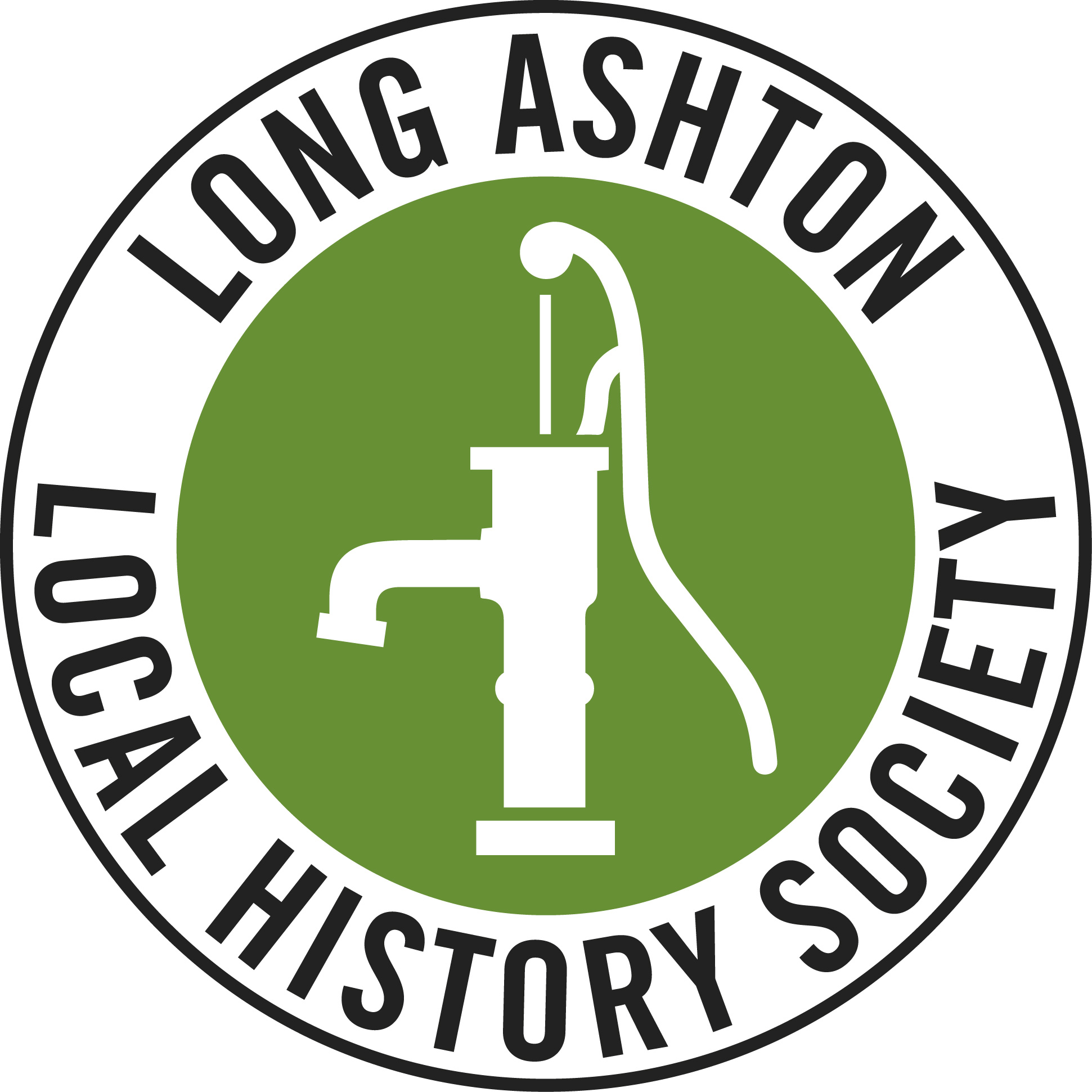A HISTORY OF LONG ASHTON
By Ruth Poole

The North Somerset parish of Long Ashton, bounded by the ancient parishes of Bedminster (now in the city of Bristol), Dundry, Barrow Gurney, Flax Bourton, Wraxall and Abbots Leigh and part of the river Avon, comprises the villages of Long Ashton and Leigh Woods, and the Ashton Court Estate and its mansion. Until the parish boundary changes in the second half of the 20th century, Farleigh Hospital, formerly the Bedminster Union Workhouse was in the western edge of the parish, and the former hamlet of Bower Ashton was absorbed into the city of Bristol.
Prehistoric artefacts have been found in the parish and there were Iron Age hill forts at Burwalls, near Clifton Suspension Bridge and at Stokeleigh in Leigh Woods. A horde of Roman coins was discovered in Ashton Park in 1815 and more have been found in the village. A large Roman settlement has been excavated at Gatcombe at the western edge of the parish. Wansdyke, a massive earthwork, possibly constructed c .577AD may have passed through the parish. Rev. John Collinson, the vicar of Long Ashton (1787-93) and Somerset historian, quoted a deed dated 1310 that referred to Venella de Wondesditch in Long Ashton and he described the route of Wansdyke through the parish. The lower part of Yanley Lane was marked as Wansdyke on the 1885 Ordnance Survey map.
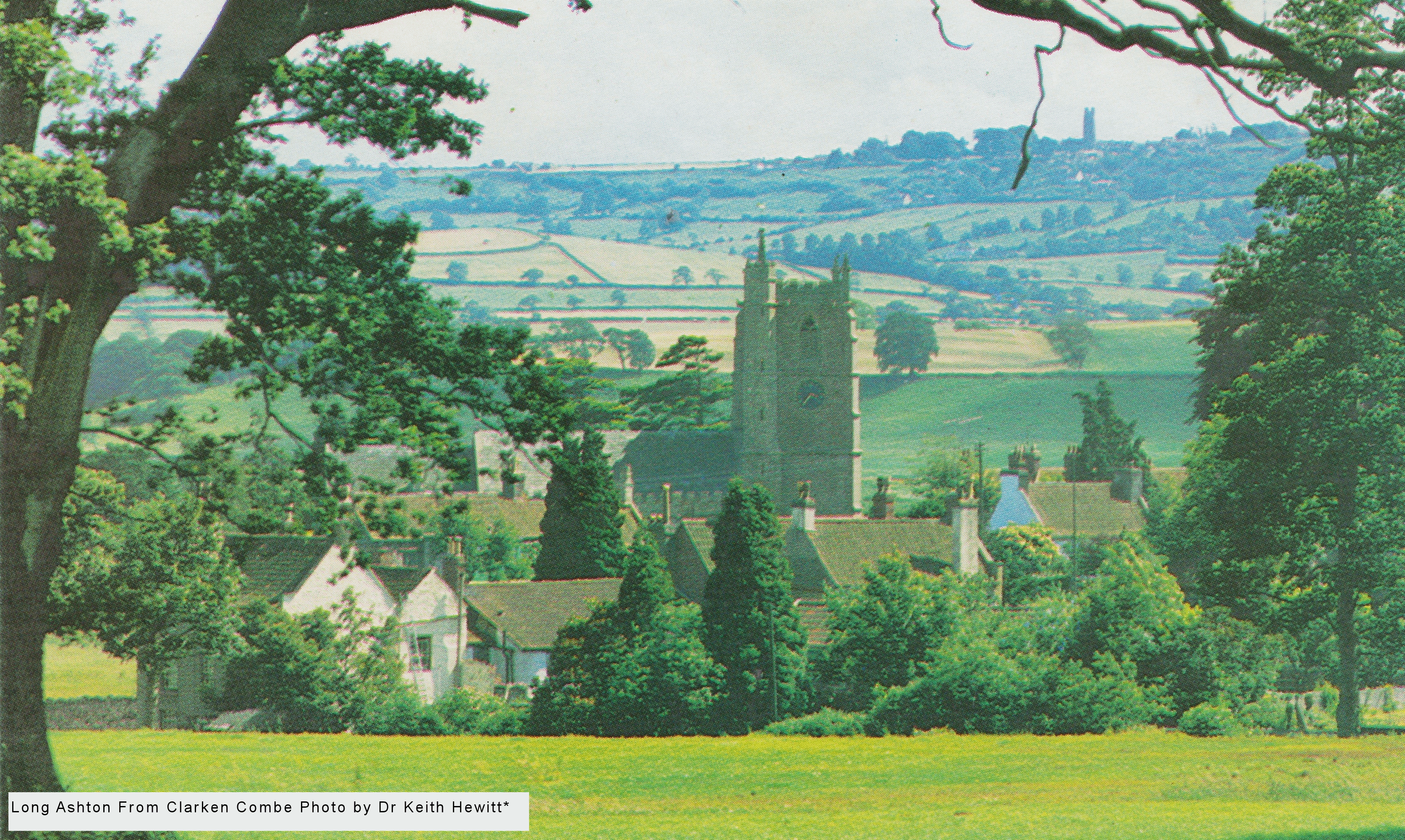
Long Ashton originated in Saxon times. The Domesday Survey of 1086 recorded that Estune, as it was then known, had been held equally by three thanes during the reign of Edward, the Confessor (1042-66) and that, after the Norman Conquest it was granted to Bishop Geoffrey of Coutances. The survey also said that there was a church here, which held about thirty acres of land.
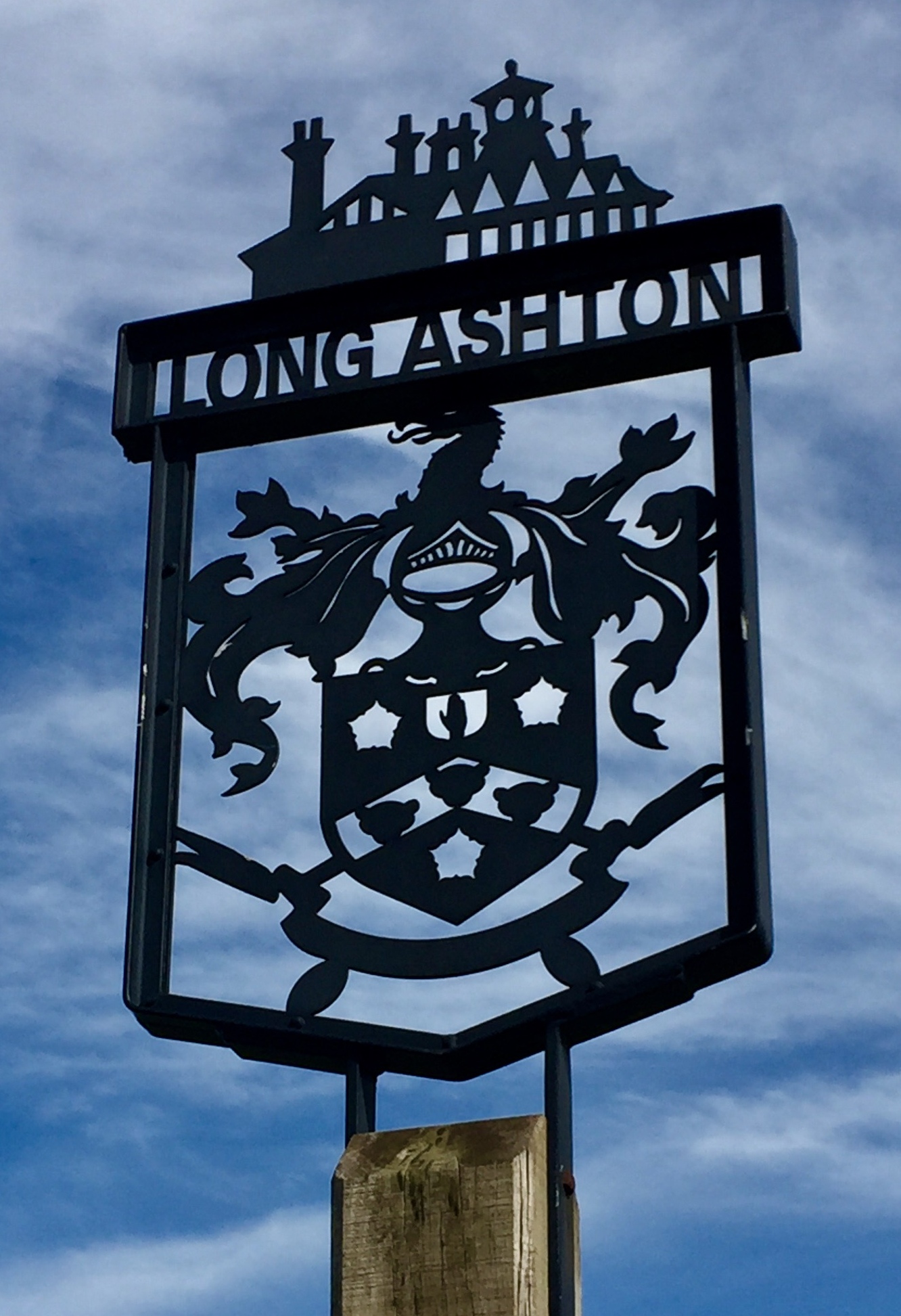
The name, ‘Estune’ is usually said to mean ‘the settlement by the ash tree’. It gradually changed to its present form so, for example, it was written Assheton in 1422. During the fifteenth century as a prefix was sometimes added e.g. Longeassheton in 1495. However, it was still customary to call both parish and village Ashton right up to the mid-19th century. The origin of this prefix is unknown. It could refer to the straggling nature of the settlement, which is now formed from the linking of a number of hamlets. Another explanation is that it is a corruption of the name of one of the local manors, Ashton-Lyons or Lyons-Ashton and, at first, may have referred to that manor only, not the whole parish.
By the 14th century, the parish was divided into the manors of Ashton-Lyons, Ashton-Meriets, Ashton-Theynes, Ashton-Philips, and the manor of the Parsonage. Gatcombe remained largely independent until it was acquired by the Smyths in 1840. Manorial boundaries cannot be strictly defined, some of their lands being scattered about the parish.
Lying in the valley, close to Yanley Lane was the Manor House of Ashton-Philips which dated back to 1265. The present farmhouse, known as Lower Court, has been much altered and only traces of the original mansion remain. The 13th Century chantry chapel still stands next to the house, although it is now a store. The manor of Ashton-Philips had been divided during the 14th century. Richard Ameryk, a Bristol merchant, began to purchase shares of the estate and by 1502 had acquired the final portion of the manor. In 1498 and 1499, as one of the two Customs officers of the Port of Bristol, Ameryk paid John Cabot the £20 yearly which King Henry VII had granted him after his voyage of discovery in 1497. Local tradition claims that Cabot named the new land America as a compliment to Ameryk.
In 1285 William de Lyons acquired the manor which took his family name. Thomas de Lyons founded the present parish church in about 1380. Richard Choke of Stanton Drew, a judge of the Court of Common Pleas purchased the manor in 1454. John Smyth a rich Bristol merchant bought it in 1545, and eventually acquired the other manors.
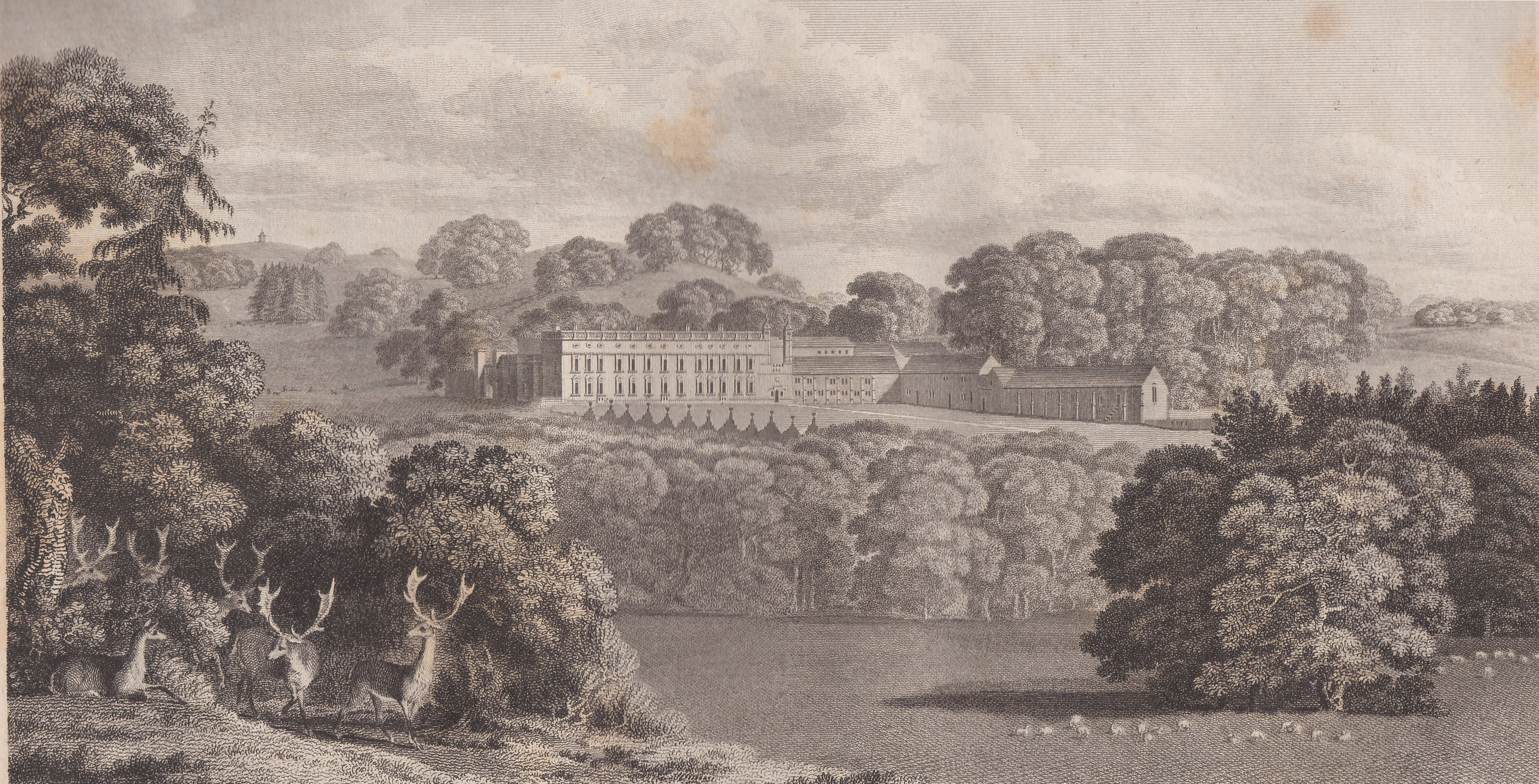
By 1603, the Smyths had become the principal landowners in the parish. The manor house of Ashton-Lyons, which was altered and added to by successive owners down the centuries, is now Ashton Court. Although the direct male line died out, the name Smyth was retained. The Smyths were lords of Ashton for four centuries playing a crucial part in parish life until heavy death duties, first after Dame Emily’s death in 1914 and finally, after the death of the Hon. Mrs Esme Smyth on 1946 forced the sale of the estates.
The parish church of All Saints dates back to about 1380 and the coat-of-arms of the founder, Thomas de Lyons can still be seen on the outside of the tower above the west window. Although the church was restored in 1871/2 some interesting features remain, such as the tomb of Sir Richard Choke, the late medieval rood screen and a Royal Achievement of Arms of Charles II’s reign. There are some fine tombs in the churchyard, eighteen of them being listed as being of historical interest.
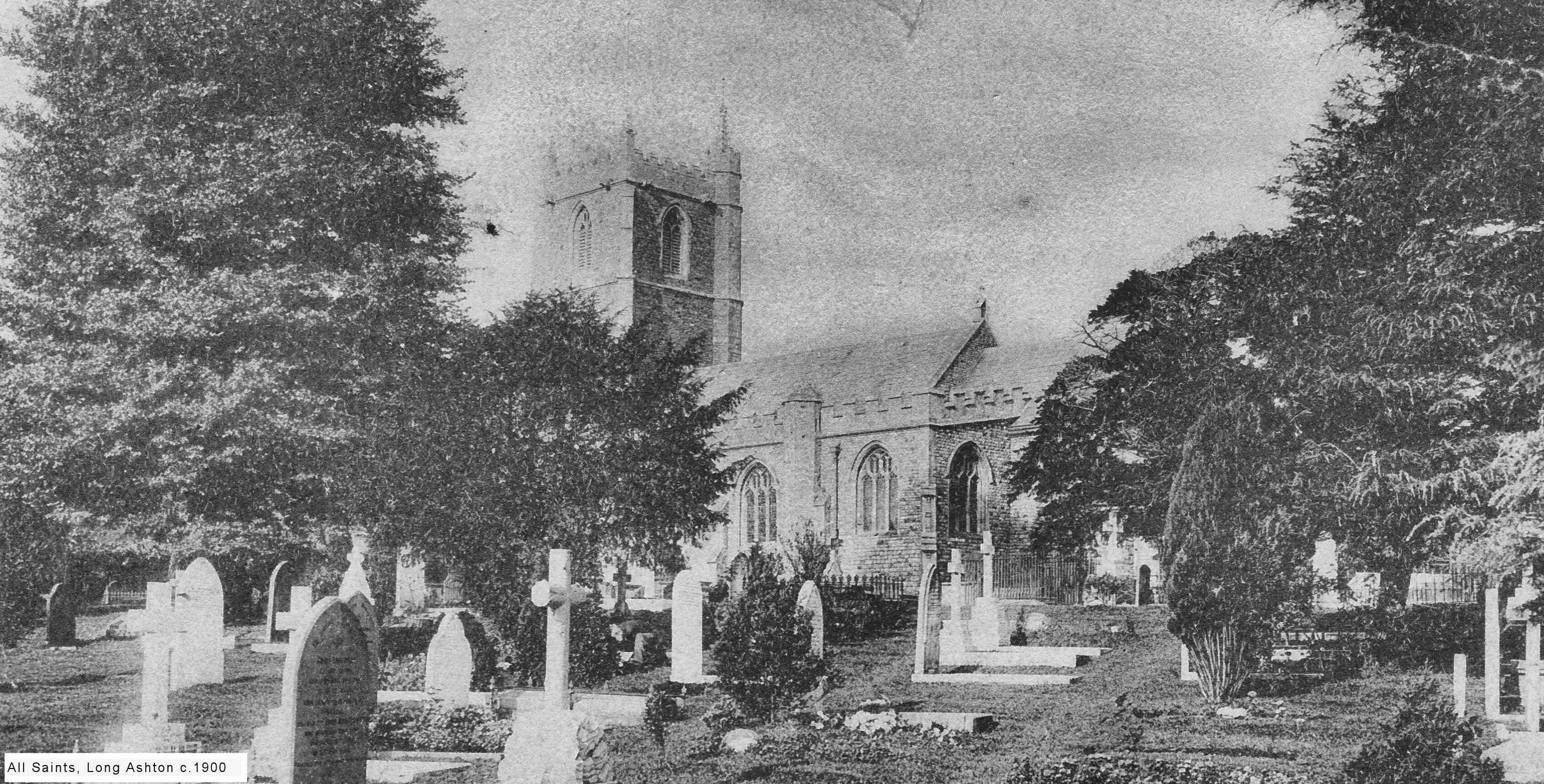
A Churchyard Trust was set up in 1994 to oversee the maintenance of the monuments. Some relations of Robert Southey (Poet Laureate 1814-43) are buried near the north porch of the church, although the grave is no longer marked. Southey’s mother Margaret was a daughter of Edward Hill, of Long Ashton, who later moved to Bedminster. “The Hills are called gentlemen upon their tombstones in Ashton Churchyard, where my father, two of my brothers, my three sisters and my poor dear cousin Margaret, are deposited with them”, wrote Southey. Parish registers (from 1558) and records are deposited at Somerset Records Office.
In “History and Antiquities of the County of Somerset”, published in 1791, the Rev. John Collinson, writing about Long Ashton, said, “The chief employment of the common people is gardening and vast quantities of all kinds of vegetables and fruits (particularly strawberries) are raised here for the Bristol market and the Hotwells which are also supplied with milk and butter for the dairies”. In 1793 Mathews Directory said that many visitors to the Hotwells “cross the river at Rownham ferry and walk to the sweet and wholesome village of Ashton to eat strawberries and cream”. The Strawberry Gardens at Bower Ashton flourished until about 1851. There were numerous market gardens in the village during the early part of the 20th century, some of which supplied Bristol shops with strawberries up until the start of World War II.
Of course, farming was formerly a major occupation in the parish and there are still several working farms, some on the fringe of the village. The Ashton Court Estate provided occupations for a variety of estate workers such as gamekeepers, foresters, carpenters, painters etc.
There was a Mill in the parish in 1086 and several others operated during the Middle Ages. Some are well documented – the 14th century fulling mill at Gatcombe had become a paper-mill by 1735, then a snuff-mill and by 1846 it was a mustard, annatto and drug mill. Mills at Kencot and Bower Ashton also produced snuff in 1815. By the 1830s Kencot had become a flour and corn mill, and from 1861 to 1900 William J. Gregory operated an iron foundry there.
Stone was quarried for lime burning during the 17th century. Later there were small quarries to obtain stone for building and road-making. There is still a large working quarry in Longwood Lane. Lead and later copper were smelted below the wood at Stokeleigh. Collinson wrote: “In the valley southward from the village are several coal-mines where at the pits’ mouth coal is delivered at threepence a bushel”. Early in the last century, Long Ashton villagers walked across the fields to work in the pits at what is now Ashton Gate. The Bedminster-Ashton coalfield finally closed in 1924. The field north of Providence, known as the Iron Plantation, yielded amounts of iron ore varying between 600 and 3000 tons per annum between 1858 and 1878. Ore continued to be mined here up until the First World War. The Miners Rest on Providence originated as a cottage, owned by the Beames family, where miners could obtain refreshment.
There is another public house in Providence Lane, not far from the Miners Rest. In 1887 Charles Beames bequeathed to his wife “two cottages and gardens situated in Providence”. When his daughter Fanny Barnett sold the property to the Ashton Gate Brewery in August 1920, they were known as Robin Hood’s Retreat and were formerly two cottages. The Angel Inn near the church is the oldest public house in Long Ashton. It dates back to 1495 when Sir John Choke gave it to the parish, together with land in return for which prayers were to be offered for the souls of himself and his family. It was the Church House, a place where parish meetings and fundraising events like ‘Church-Ales’ could be held. Travellers could also obtain refreshment there. The first recorded landlord was Richard Addys in 1597. By the 18th century, it was often called the Angel Inn. It was sold in 1902 and Lady Smyth paid for a new Church House to be built at Westleaze in 1907.
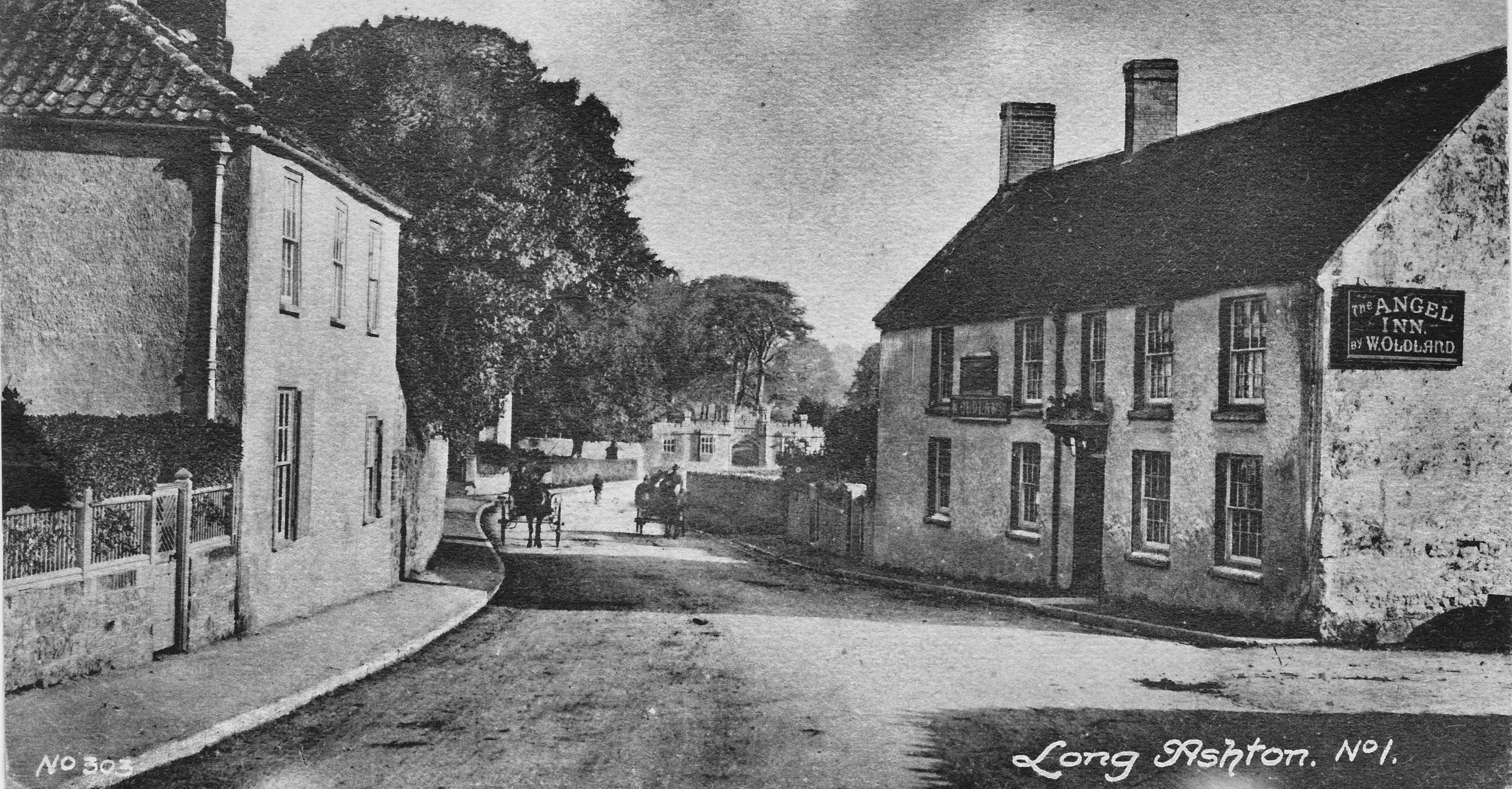
The Ashton, as it has recently been renamed, stands by the Ashton Road, approaching the village. This too originated as a cottage, and became an alehouse during the 16th century. By 1739 it was known as The Coach and Horses and was a coaching inn when the turnpike roads were built. In the 1860s it was renamed The Smyth Arms, as a compliment to the owners of the Smyth estates, to which it belonged.
The Bird-in-Hand, at the western end of the village, is said to be over three hundred years old. During the 1890s it was very popular with Bristol visitors. During the late 19th century a horse-drawn bus ran between the Talbot pub, in Redcliffe Street, Bristol and the Bird-in-Hand several times a week. Two more public houses also in Long Ashton village have now closed. The Ashton Arms on the main road near Yanley Lane closed in 1966. The Gardener’s Arms at Birdwell closed in the 1950s and was demolished in 1971 to make way for a supermarket.
Many Long Ashton villagers did laundry-work during the 19th century and, at times, the hillside was said to be white with drying washing. The men folk who were taking produce into Hotwells and Clifton also fetched and carried laundry. There were also two commercial laundries, the Fenswood Steam Laundry, which was operated in the village by Henry C. Davis from 1891 to 1914 and the Sunlight Laundry, on the site of the New Inn at Rownham from some time after 1891 to the 1920s.
The National Fruit and Cider Institute opened at Fenswood on the edge of the village in 1903. In 1912 it became the Agricultural and Horticultural Research Station. Valuable work has been done there in many aspects of fruit and crop production. Blackcurrant syrup, later to be marketed as Ribena, and Rose Hip Syrup were two of the products developed for the Ministry of Health during the Second World War. In later years it was known as the Arable Crops Research Centre. Sadly it closed in 2003.

From the 17th century charitable bequests, administered by the Vicar and Churchwardens, provided for the education of poor children in Long Ashton. Following a request from the managers of this school, including the vicar, the Rev. Israel Lewis, the National Society gave a grant of £75 towards the building of a Parochial School in Church Lane. It opened in 1818 and consisted of a teacher’s house and a schoolhouse containing two classrooms.
In 1861 a new Parochial School was opened in Long Ashton Road on land granted by Sir Greville Smyth and the old school in Church Lane was let as cottages. It is now a private dwelling. The new school was open to children of all denominations, although like the previous one it was a National School. It is now known as Northleaze V.C. Primary School. This Victorian School closed in February 2006 and pupils moved into new purpose-built premises on the school's former sports ground in the valley. A small school for non-conformists, supported by the British Society was established in 1884 and functioned for a number of years. In 1967 another primary school was opened at Birdwell at the western end of the Village.
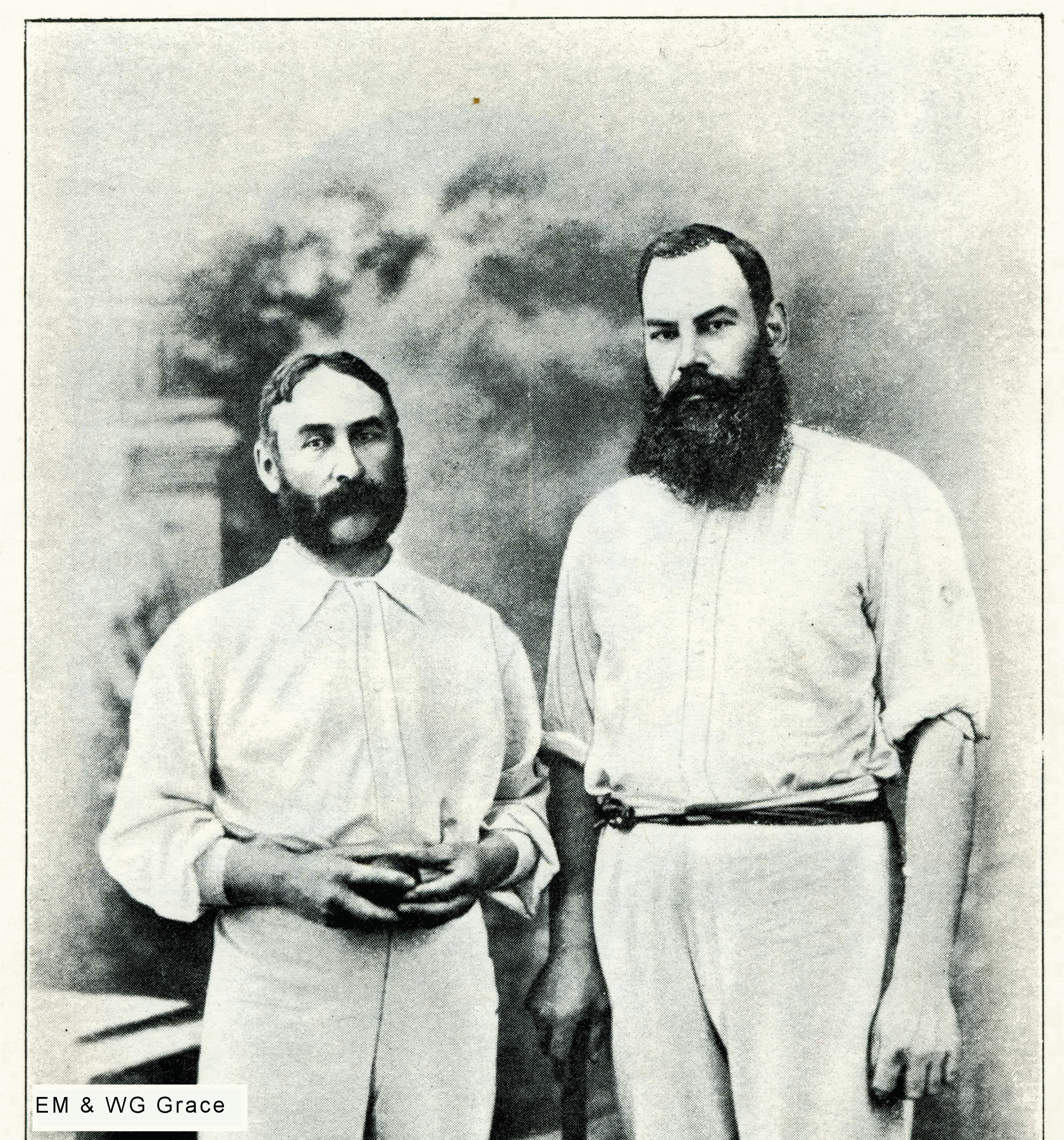
There were numerous private schools in the parish, particularly in the village from the late 18th century into the early 20th century. Some were obviously just ‘Dame schools’ but others offered a good standard of education. Dr Henry Mills Grace, father of Dr W.G. Grace was born here in 1808 where his mother, Elizabeth, ran a small school for girls. Sir Frederick Roberts, later Lord Roberts, Commander-in-Chief of the British Army, attended Sarah Carpenter’s School for Young Gentlemen under nine years of age at the Mead. The most well-known of these schools was run by John Kempe and later by Wilfred, his son. It opened at Westleaze on the Long Ashton Road but in about 1851 removed to nearby St Martins where it became known as Long Ashton School. At one point there were over eighty borders, many of whom came from South Wales. The school produced many fine cricketers, two of them being E.M. Grace and Fred Grace, two of W.G. Grace’s brothers.
Mr John Fisher Weare built the first Congregational Chapel on the edge of the village, in 1792. It is now a private house as is its replacement, later the United Reformed Church, built in 1892.
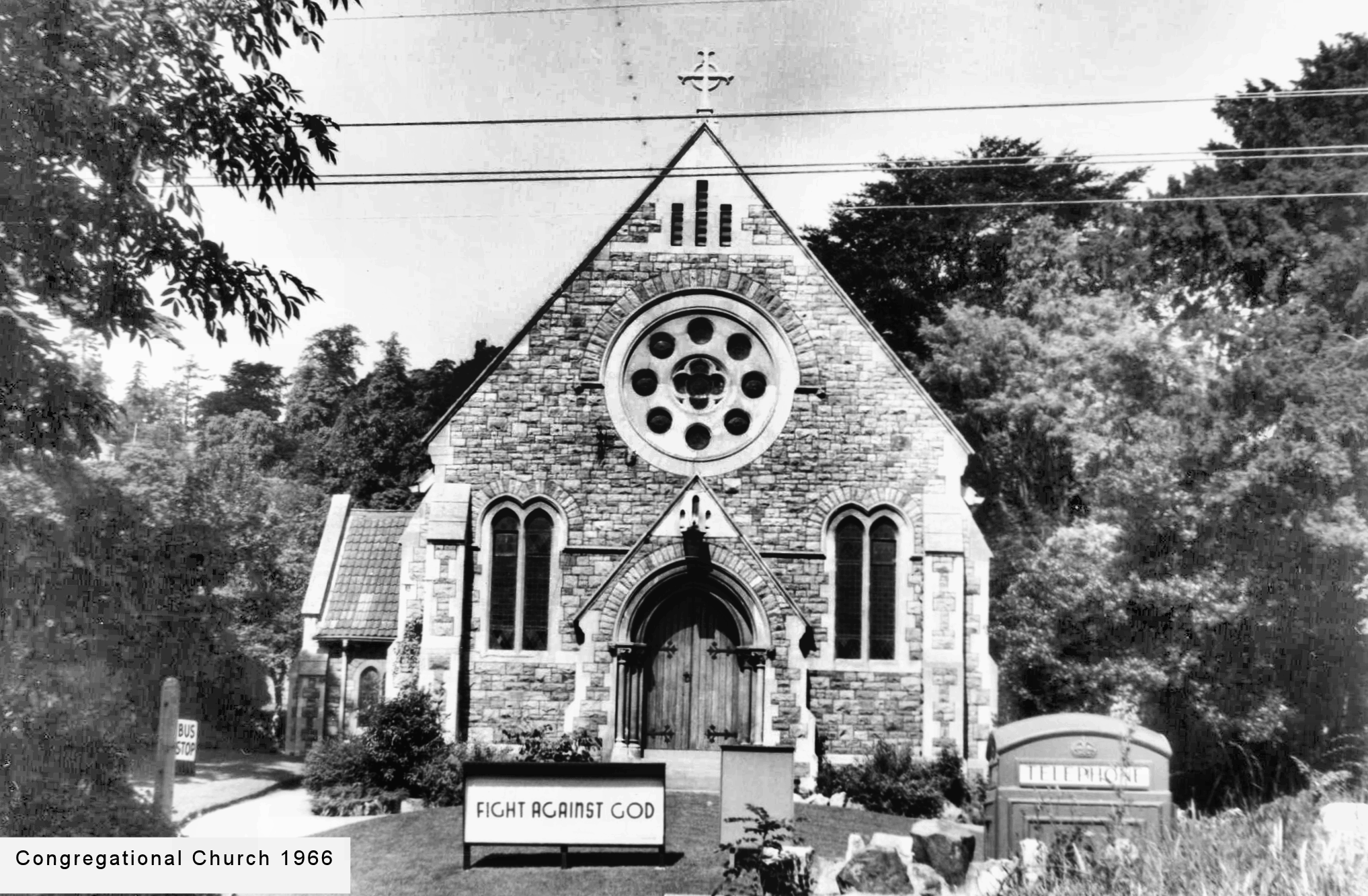
In 1834 Non-conformists were licensed to worship in cottages at Providence. Later a Chapel of the Brethren was built there and continued to be used as a Chapel until after the Second World War. Hebron Evangelical Church was erected in Providence Lane in 1934 largely due to the devoted work of Ernest Dyer.
Building in the Leigh Woods area commenced soon after 1865 when Sir Greville Smyth sold 168 acres to the Leigh Woods Land Company. By 1909 the land south of Nightingale Valley had been fully developed but a large area was preserved by gifts of land by members of the Wills family to the National Trust. Residents of Leigh Woods had to travel via Rownham Hill to attend the parish church in Long Ashton village, so it was decided to build a new church to serve the area. St Mary’s Leigh Woods was completed by October 1892 and licensed for worship. Baptism and marriage registers are kept at the church, of which Bristol Records Office has contact information. The nature of the site at Leigh Woods made the provision of a graveyard impossible and consequently many residents of Leigh Woods are buried in Long Ashton Churchyard. Amongst them were members of the Harvey family, Joseph Leech, newspaper proprietor and author of ‘Rural Rides’ and Emma Marshall, the Victorian novelist.
Parish Councils were established in 1894 and took over responsibility for civil affairs from the vestry. When Long Ashton Parish Council met for the first time on December 14th it consisted of eleven members who represented various aspects of parish life. Thomas Dyke, the Ashton Court Estate steward represented land interests, John Baker, a builder and carpenter, William M. Perry, a tanner, and Dr J. Fuller, a surgeon, represented professions, trade etc. There were two farmers, James Marsh and William Merson Court and residents were represented by E.J. Swann J.P. a retired solicitor from Leigh Woods. Finally, labour interests were represented by William Evans of Bower Ashton, a retired engine-wright at the colliery, George Ball, a general labourer in charge of the painters at Ashton Court, George Brock a labourer and William Tucker, a coal miner.
Until the opening of the Clifton Suspension Bridge in 1864 the only two routes from Long Ashton into Bristol were via Rownham Ferry or through Bedminster. In 1906 the Ashton Swing Bridge opened, giving access to Bristol, via Hotwells. By the 1950s traffic through Long Ashton was very heavy, particularly at holiday time. Much of this traffic was diverted with the opening of the Long Ashton by-pass in 1968.
During the 19th century, Long Ashton village still consisted of small groups of houses along the main road and in Providence Lane. Some properties dated back to medieval times. A few large houses had been built during the late 18th and early 19th century and most of these were occupied by prosperous Bristol merchants, but development was very limited. Some building took place during the 1920s and 1930s but the outbreak of war in 1939 brought this to a halt.
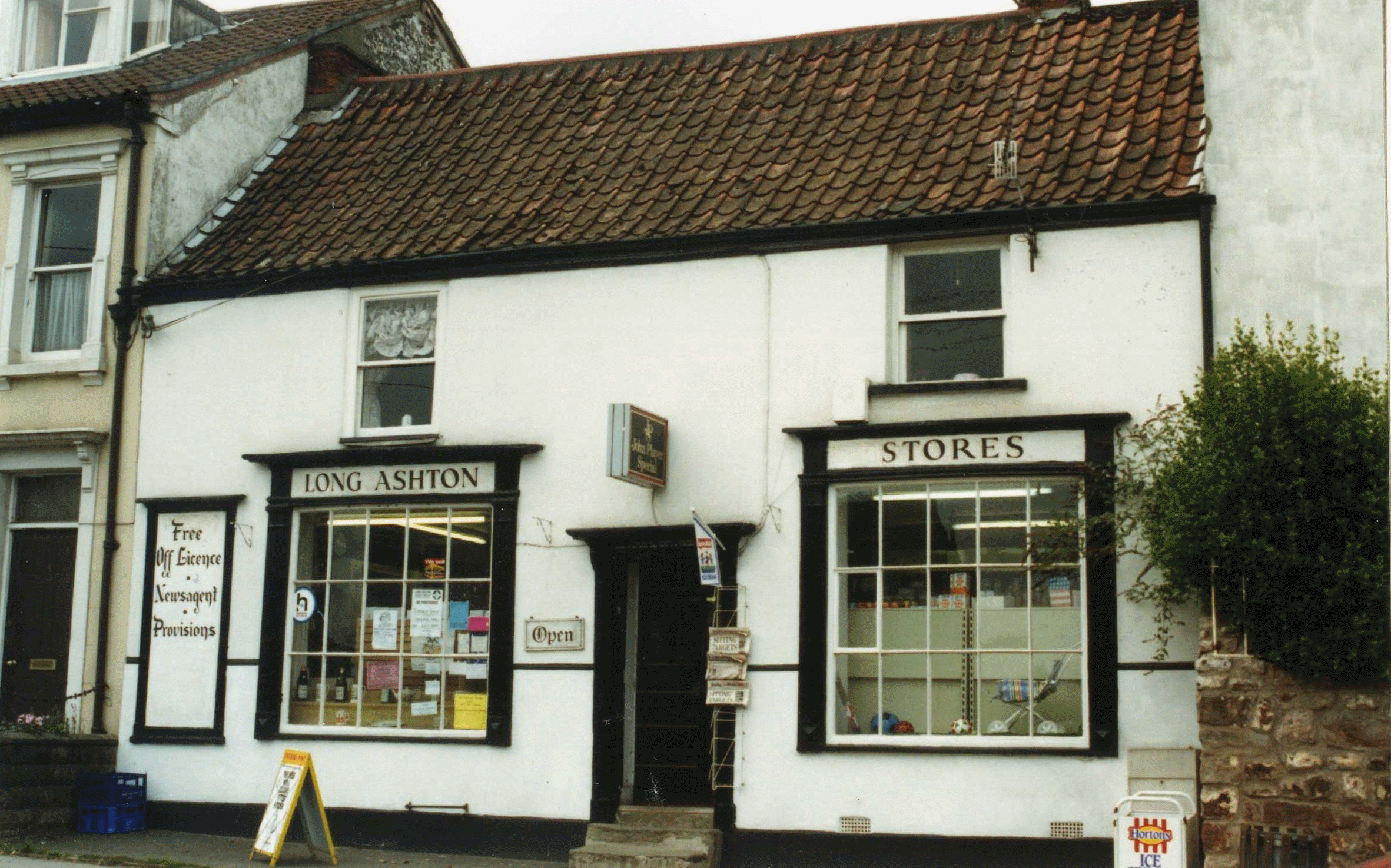
The disposal of the Smyth estates after 1947 opened the way for new development. 1041 new dwellings were built between 1947 and 1998 and work started on new houses in the valley and in Providence Lane. A small church associated with the parish church was opened at Keedwell, at the western end of the village in 1961. Many inhabitants of the village now commute into Bristol. Despite the many changes that have taken place over the centuries, the parish of Long Ashton still manages to retain its separate identity.
